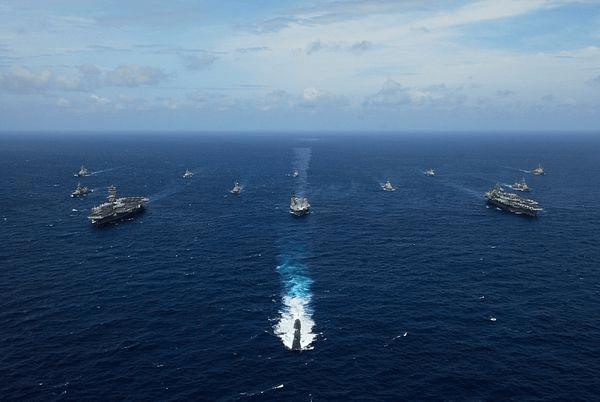The recent docking of Japan Coast Guard vessel Akitsushima and U.S. Coast Guard Cutter Stratton at Manila Port area marks the commencement of a historic week-long maritime drill with the Philippine Coast Guard. This trilateral exercise represents a significant milestone in the enduring partnership between these Allied Nations. It symbolizes their dedication to maintaining maritime safety and security in the region. Let’s delve into the details of this unprecedented gathering and the importance of such collaborative efforts.
Strengthening Partnerships:
The interactions between service members from Japan, the United States, and the Philippines demonstrate the impact of their enduring partnership. Beyond symbolic gestures, these joint exercises enhance interoperability and cooperation among the coast guards of these nations. The drills aim to address current regional security threats and ensure a free and open international order in the Pacific region.

A Historic Transformation:
The gathering at the historic Manila Bay carries a profound significance considering the once dark and painful past shared by Japan, the Philippines, and the United States. Nearly eight decades ago, they were bitter enemies fighting in a global war. Today, they have come together to collaborate on maritime exercises, highlighting the remarkable transformation of their relationship. This trilateral drill showcases the commitment to peace, cooperation, and progress.
Focus on Maritime Safety and Security:
With more than 500 Filipino, American, and Japanese Coast Guard personnel participating, the exercise encompasses search and rescue operations, as well as law enforcement drills. These exercises test the capabilities and readiness of the coast guards in handling various scenarios. The drills take place off the coast of Bataan, a historically significant province in the Philippines. They provide an opportunity for all parties to implement new mandates and enhance their training methods.
A Message of Collaboration, Not Confrontation:
Amidst China’s persistent threats in the West Philippine Sea, it is crucial to emphasize that this exercise is not a show of force. Instead, it underscores the commitment of Japan, the United States, and the Philippines to regional stability, safety, and cooperation. By jointly addressing common challenges and sharing expertise, these nations aim to create a safer and more secure maritime environment.
Conclusion:
The trilateral maritime drill between Japan, the United States, and the Philippines signifies a significant step forward in their partnership for maritime safety and security. This joint exercise demonstrates the commitment of these nations to collaborate and strengthen their capabilities in addressing regional challenges. By fostering interoperability and conducting search and rescue operations, they work towards maintaining a free and open international order in the Pacific region.
